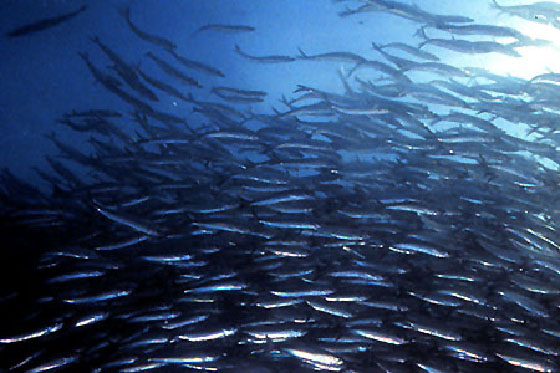Help Protect River Herring and Shad

River herring and shad populations have declined by over 90 percent since 1985. This loss of fish, despite removals of dams and improvements to the health of rivers, is due to overfishing and by-catch mortalities while trawling for sea herring and mackerel. River herring and shad are incidental takes that sold on market with the regulated forage fish. While the salt water fish are managed, river herring and shad have been left out of federal management plans.
Join us in urging NOAA Fisheries to approve efforts by both the New England and the Mid-Atlantic Fisheries Management Councils to establish federal management of river herring and shad. To save these fish with a sustainable fishery, the Councils must establish strong annual catch caps, improved observer coverage, and a dramatic decrease in fish deaths as by-catch and less at-sea-dumping, “slippage,” of unobserved catches.
River herring and shad play a vital role in the coastal and ocean ecosystems. They feed many of the larger fish, birds, dolphins and whales. They also support the commercial fishing of larger, commercially valuable fish like cod, striped bass and tuna. The health of the ocean ecosystem depends on these forage fish.
Tell fishery managers to save river herring and shad. Please comment on why this matters to you.
BACKGROUND
We Won Case, Federal Judge Struck Down Latest Atlantic Herring Management Plan
Washington, DC – U.S. District Court Judge Gladys Kessler has found that the National Marine Fisheries Service (NMFS) acted illegally in approving the plan put together by the New England Fisheries Management Council known as Amendment 4 and tossed out the entire amendment.
“Now there is a precedent that if they don’t take the time to get responsible management, people will speak out, and fishermen and institutions have the right to take them to court,” said Rob Moir, president of the plaintiff Ocean River Institute.
“Essentially, the court found that NMFS rubber stamped an illegal fisheries management plan and is now requiring they go back and fix it,” said Roger Fleming who represented in court the coalition of recreational anglers, charter-boat fishermen, and conservation groups led by ORI. “This time they must get the necessary protections right, it’s not optional.”
For more on this case, CLICK HERE
Why Oceans Need Herring?
Atlantic (sea) herring, river herring and shad are critical components of the ocean and coastal ecosystems. These schooling fish feed bigger fish. The health of the ocean depends on these small “forage fish.” They are the most significant source of food for a variety of commercially valuable fish like cod, sought after sport fish like striped bass and tuna, and countless birds and mammals. River herring migrate up rivers only for spawning; they spend most of their lives in the ocean.
Why River Herring Need Our Help?
Much has been done to improve herring runs in rivers. Yet, since 1985 there has been over a 90 percent decline in river herring populations. This is because there is overfishing and significant by-catch of herring offshore in the ocean. Industrial scale mid-water herring trawlers are the worst because they tow nets that are longer than a football field and taller than a five-story building. This indiscriminate fishing method kills up to 500,000 pounds of marine life in a single tow: river herring, bluefin tuna, dolphins, whales, haddock, and cod, in addition to the targeted Atlantic herring. A single tow by a large mid-water vessel can wipe out one river’s entire herring population.
Give $10 to enable ORI to continue collaborative efforts to save herring.
Take Action: Tape your check to a jar of “Herring Fillets in Dill Marinade (no preservatives – wild)” by Blue Hill Bay of Canada and mail to Rob Moir at ORI.
